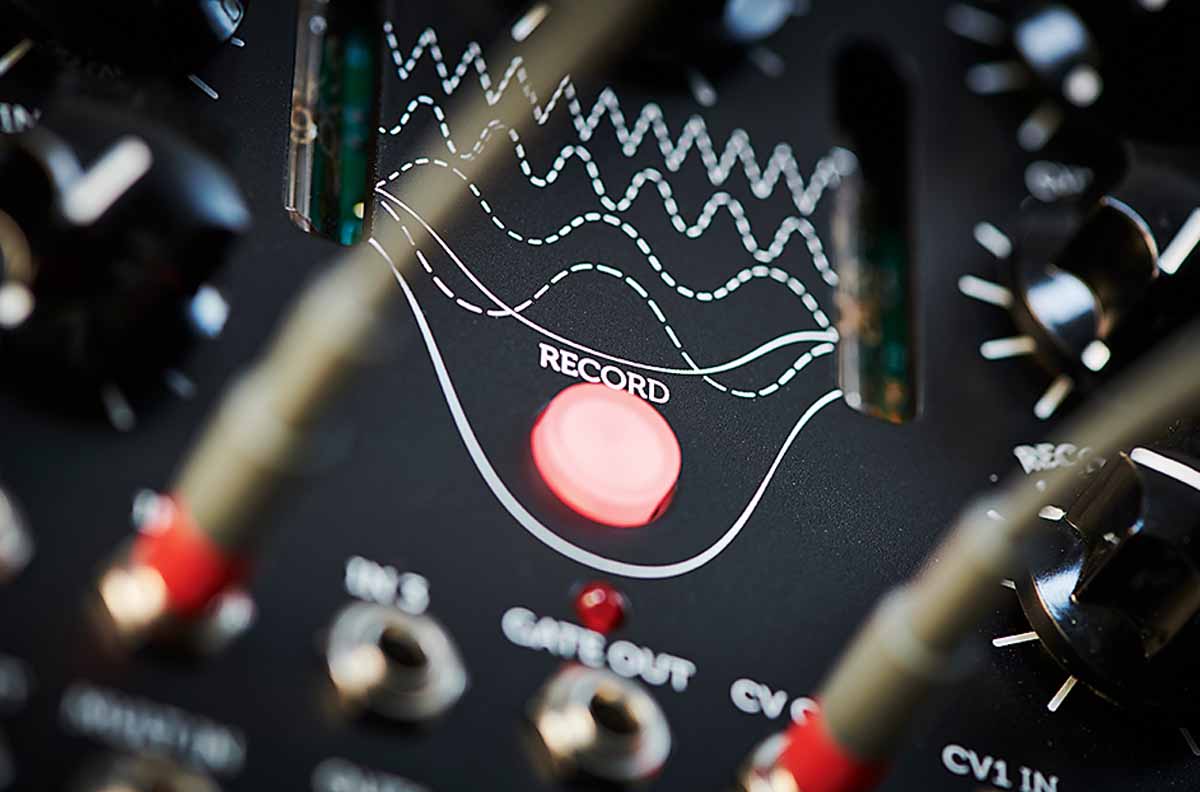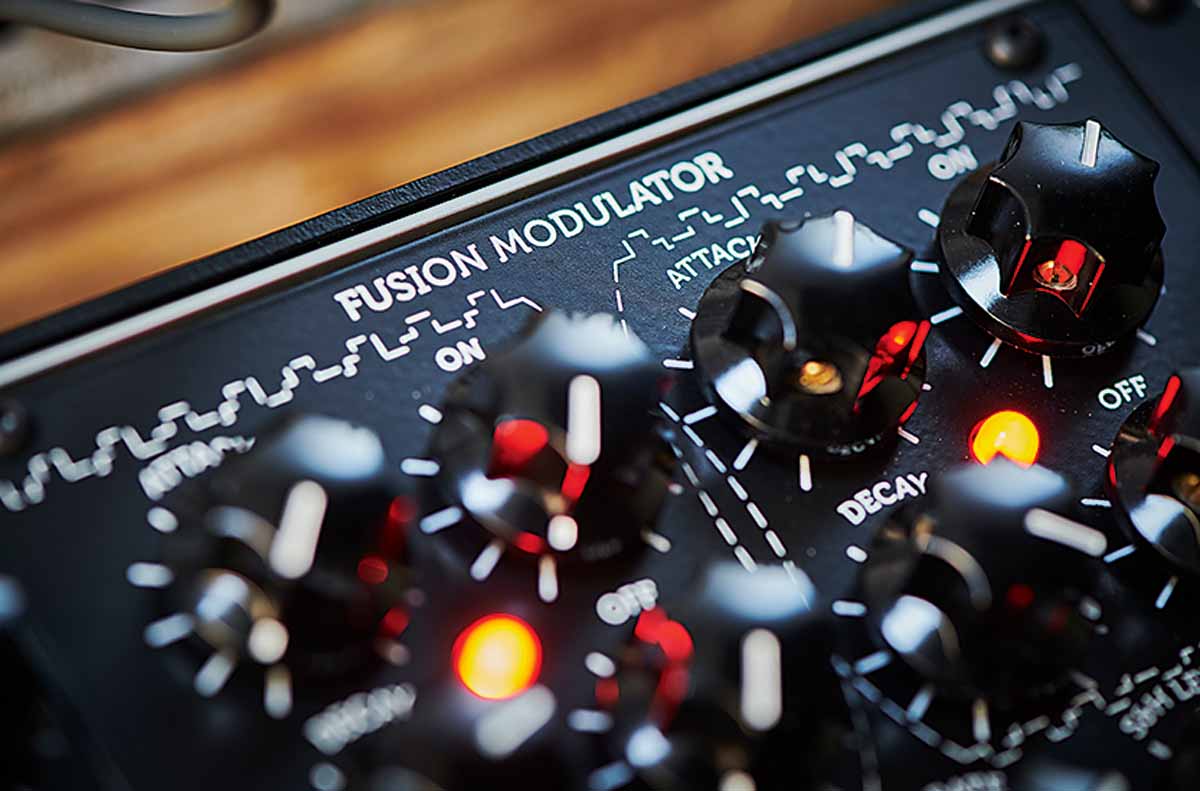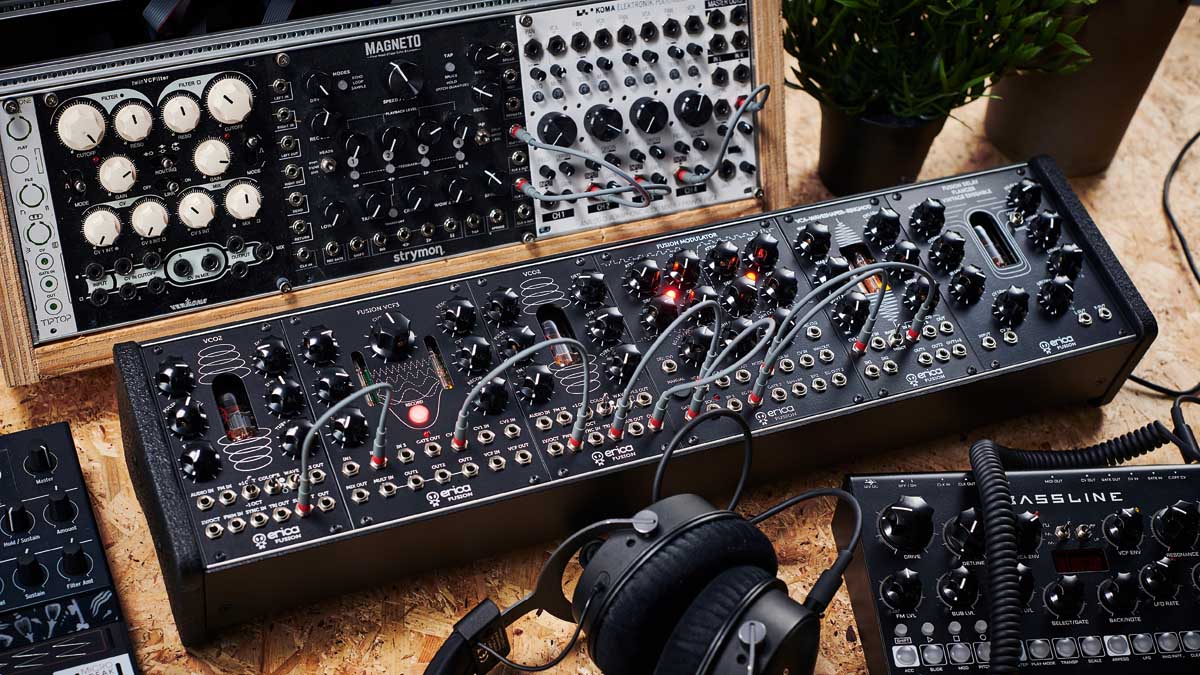MusicRadar Verdict
With bags of personality and sonic opportunity on offer, Erica Fusion will deliver endless experimentation and, most importantly, fun.
Pros
- +
Solidly built.
- +
Lots of patch points.
- +
Lots of analogue warmth and growl.
Cons
- -
You can’t get the sterile clarity of other units.
- -
Delay effect is not what you might have been expecting.
MusicRadar's got your back
What is it?
Following in the tradition of many Erica Synths modules and full systems, the first thing you notice with the Fusion 2 is the solidity of the physical object.
It ships in a 104hp skiff, with textured end cheeks and, although the case is thin bent metal, it feels tough enough to give you confidence for live work.
The fascias similarly show typical Erica Synths stylings, reminiscent of something you might see in the prop cupboard of a B-movie about a mad scientist. Knobs and switches all feel robust, with good resistance and the patch points are well seated.
Erica Synths have a history with aggressive modules that pack a punch but nothing as yet has quite the degree of warmth and grit as these new offerings.
Fusion isn’t a new thing to Erica, however they have adapted, upgraded and evolved the concept so that sound designers can access a new palette of possibilities.
Let’s look at this in terms of individual modules in the context of a complete system – as that’s how many people will buy them, with the skiff and power supply as a package.

Performance and verdict
For many, the journey starts with oscillators, in this case two single voice, three waveshape, Fusion VCO 2s. These have the tools you might expect, such as volts per octave and audio inputs, as well as CV jacks that include separate outputs for the -1oct sub and triangle waves and an input for modulating the pulse width.
Want all the hottest music and gear news, reviews, deals, features and more, direct to your inbox? Sign up here.
Fusion 2 VCOs have a bucket brigade-based short delay driving the detune effect, which sounds wide and glorious (or subtle if that’s your thing)
If that was all that was in place it would be a fine VCO, however, Fusion 2 VCOs have a bucket brigade-based short delay driving the detune effect, which sounds wide and glorious (or subtle if that’s your thing).
They’ve also embedded a Valve into the circuit, visible through a cutout on the fascia, nicely lit by an orange LED for that vintage glow. It looks cool and sounds better. The more you engage the Tube Crunch control, the more grit is invoked. Further personality can be added by cranking the FM knob, which also sets an upper level when using CV.
Sitting between the two VCOs is the Filter module, a 24dB valve/vactrol-based circuit, that also includes a buffered mult and a three-channel mixer.
Sweeping the filter presents a less wild result than you might expect, although the resonances scream into self oscillation.

• Make Noise 0-Coast
A fantastic way to get quickly immersed in the realm of modular synthesis without the hassle of lugging a huge case around.
• Moog Mother-32
The playful sequencer, the solid analogue circuitry, and the Mother-32's inherent flexibility make it well worth the price of entry. It's easily good Moog for your money.
The trick here is the big button. Pressing this starts the module recording your control voltage changes, so you can preserve mod setups.
As a creative tool, this is inspiring as well as downright fun, which sound design tools should be. It should be noted that audio range mods aren’t applicable here due to the limitations of vactrol circuits.
Jump the second VCO to land on the modulator module, a larger device that is home to multiple mod sources. Two looping envelope generators (with a manual trigger button) kick thing off, their attack, on, delay, off rotary controls. These are both unipolar and bipolar together, with CV control over the decay time.
These twin EGs are core to the module; however, the fun begins with the clockable sample & hold section, that means creating melodic drones and pitched textures is a breeze, although there is no quantisation on offer, so you might want to think about an external solution to that.

It’s based on the module’s noise source which has its own output and sounds great; more red noise than white. Patch points are in abundance, across the lower part of the fascia (nice to see them grouped for control access when cable clutter can block the way).
This brings us to the combo VCA/Waveshaper/Ringmodulator, this time with two miniature pentode valves on show. This module operates in two simultaneous circuits, allowing you to patch dual CVs for the amp.
In practical terms you can use the frequencies of VCA and ring mod as waveshaping systems, in turn giving you complex and versatile, yet intuitive sound design options, all with the added juice of the analogue drive that is the hallmark of the Fusion system.
Any of the modules in this system could have a place in someone’s Eurorack system
Last in the skiff is the flanger/delay/vintage ensemble effects module. If you have ever used a delay or flanger unit you probably have certain expectations but you need to put them aside, as this unit will not fulfil them.
What this module does is add breadth and movement to your sound. It has settings for long/short delay and a wet/dry mix. There are also rotary controls for CV level when patched and fed back.

This all sounds quite simple and it is but that doesn’t do justice to what can be achieved with this unit. If you’ve heard a vintage Roland vocoder with the ensemble effect engaged, you’ll have an idea of what this does. It adds a phaser type motion and width to the incoming audio, to which you can add tube grit, as this Fusion 2 device also has an analogue tube circuit.
Any of the modules in this system could happily find a place in someone’s Eurorack system. They really make sense as a complete setup like this though and I highly recommend it to anybody with a hankering for a more warm output.
The possibilities for drive abound, as do options for modulation and all in a package that delivers on aesthetics as well as tone.
MusicRadar verdict: With bags of personality and sonic opportunity on offer, Erica Fusion will deliver endless experimentation and, most importantly, fun.
Hands-on demos
Erica Synths
The Oysterhouse Boys
Specifications

- Type: Modular analogue synth
- Key Features: Tube-based modules comprise 2x Fusion VCO 2, Fusion VCF3, Fusion VCA-Waveshaper-Ringmodulator and FusionDelay/flanger/vintage ensemble; all-analogue signal and CV path, 63 patchpoints, 104HP One Row Skiff case (with lid £2,090 / €2,033), 20 patch cables
- Contact: Erica Synths
